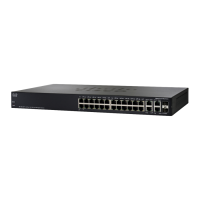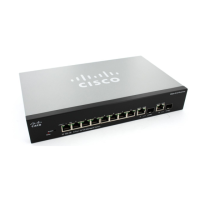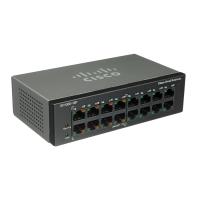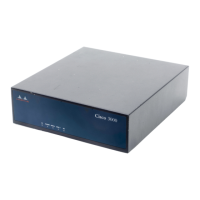IP Configuration
IPv4 Management and Interfaces
276 Cisco Small Business 200, 300 and 500 Series Managed Switch Administration Guide (Internal Version)
17
To define an IP static route:
STEP 1 Click IP Configuration > IPv4 Management and Interfaces > IPv4 Routes.
STEP 2 Click Add.
STEP 3 Enter values for the following fields:
• Destination IP Prefix—Enter the destination IP address prefix.
• Mask—Select and enter information for one of the following:
- Network Mask—The IP route prefix for the destination IP.
- Prefix Length—The IP route prefix for the destination IP.
• Route Type—Select the route type.
-
Reject
—Rejects the route and stops routing to the destination network
via all gateways. This ensures that if a frame arrives with the destination
IP of this route, it is dropped.
-
Remote
—Indicates that the route is a remote path.
• Next Hop Router IP Address—Enter the next hop IP address or IP alias on
the route.
NOTE You cannot configure a static route through a directly-connected IP
subnet where the device gets its IP address from a DHCP server.
• Metric—Enter the administrative distance to the next hop. The range is 1–
255.
STEP 4 Click Apply. The IP Static route is saved to the Running Configuration file.
ARP
The device maintains an ARP (Address Resolution Protocol) table for all known
devices that reside in the IP subnets directly connected to it. A directly-connected
IP subnet is the subnet to which an IPv4 interface of the device is connected.
When the device is required to send/route a packet to a local device, it searches
the ARP table to obtain the MAC address of the device. The ARP table contains
both static and dynamic addresses. Static addresses are manually configured and
do not age out. The device creates dynamic addresses from the ARP packets it
receives. Dynamic addresses age out after a configured time.
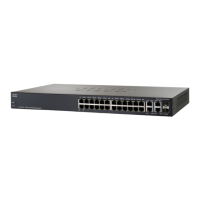
